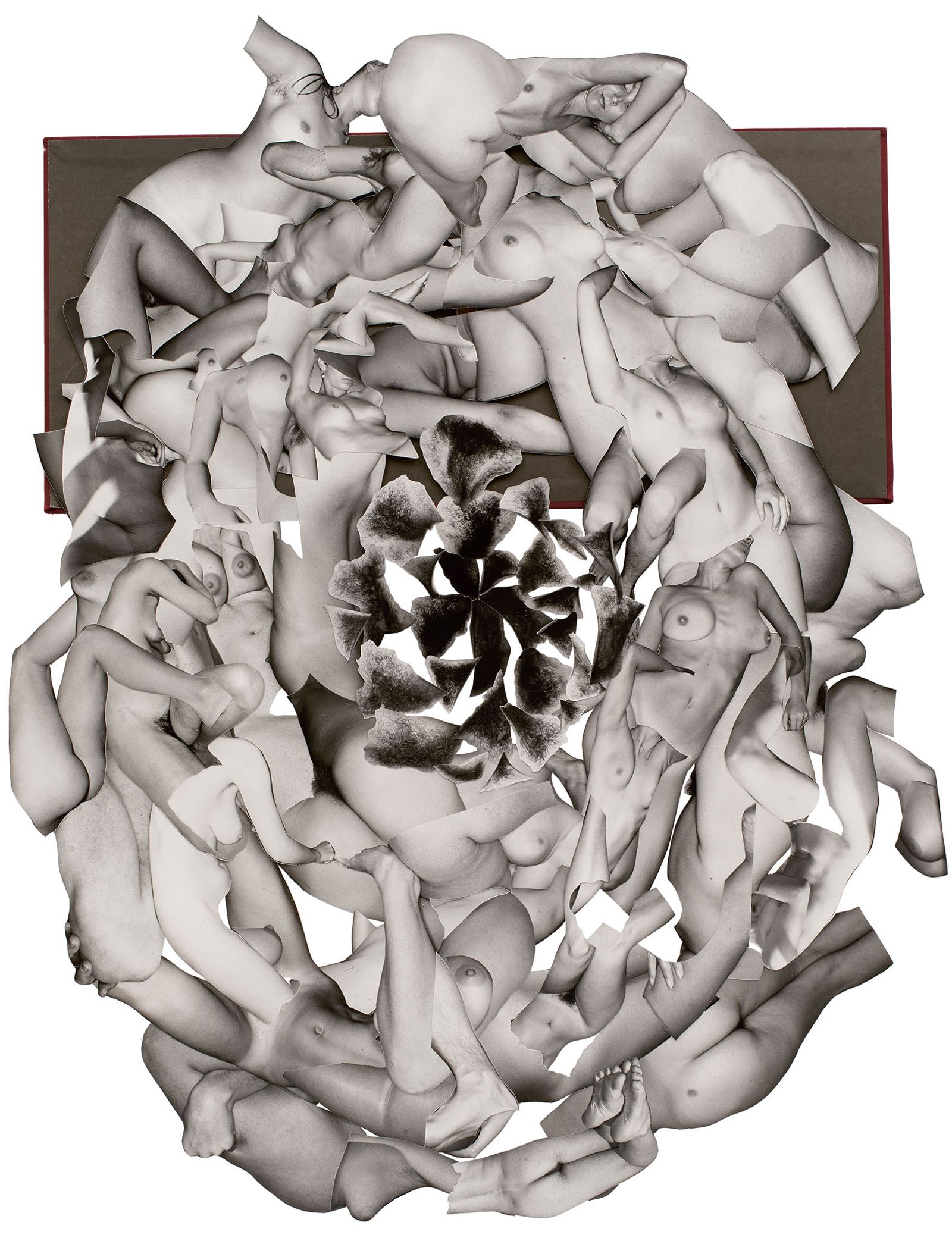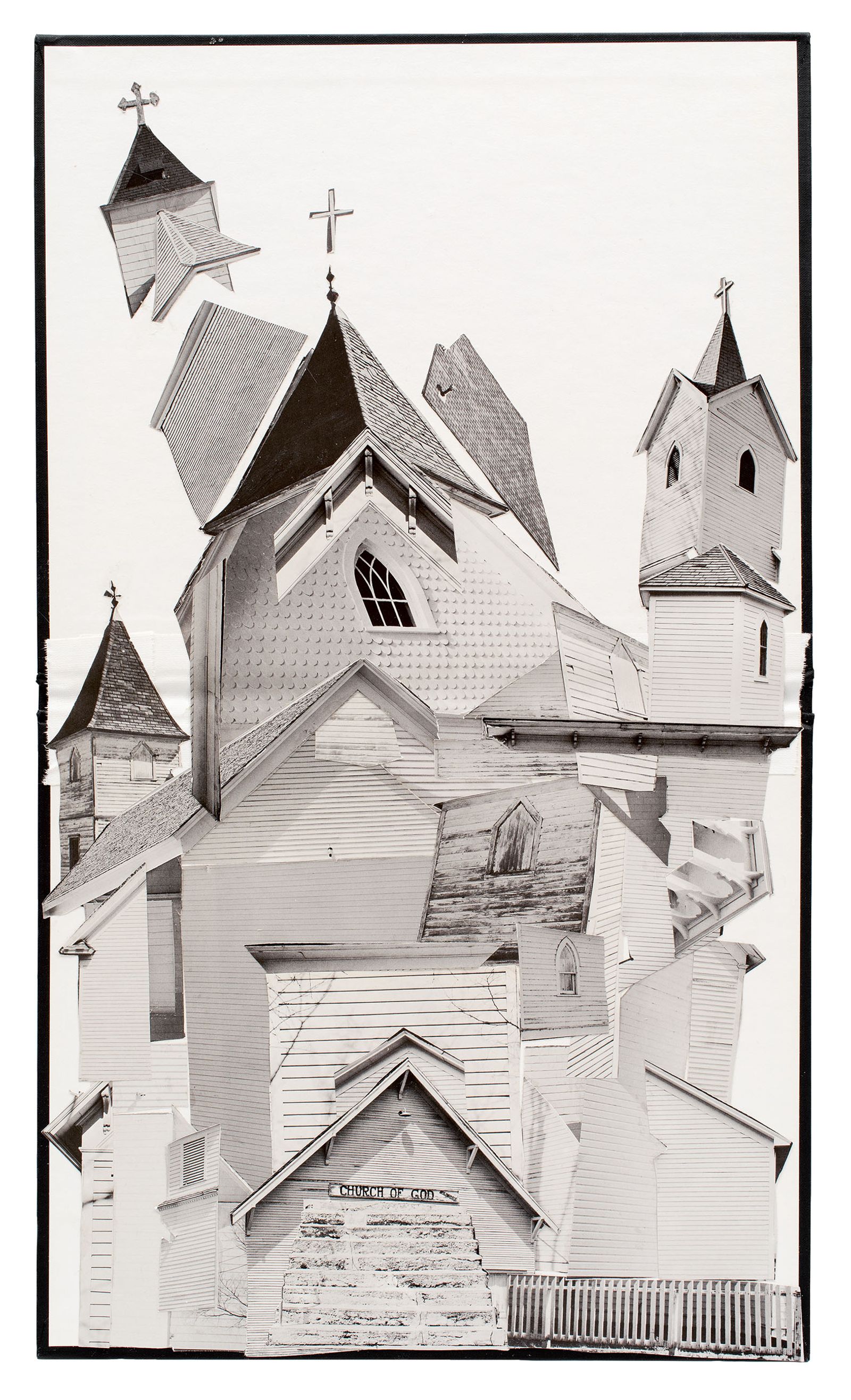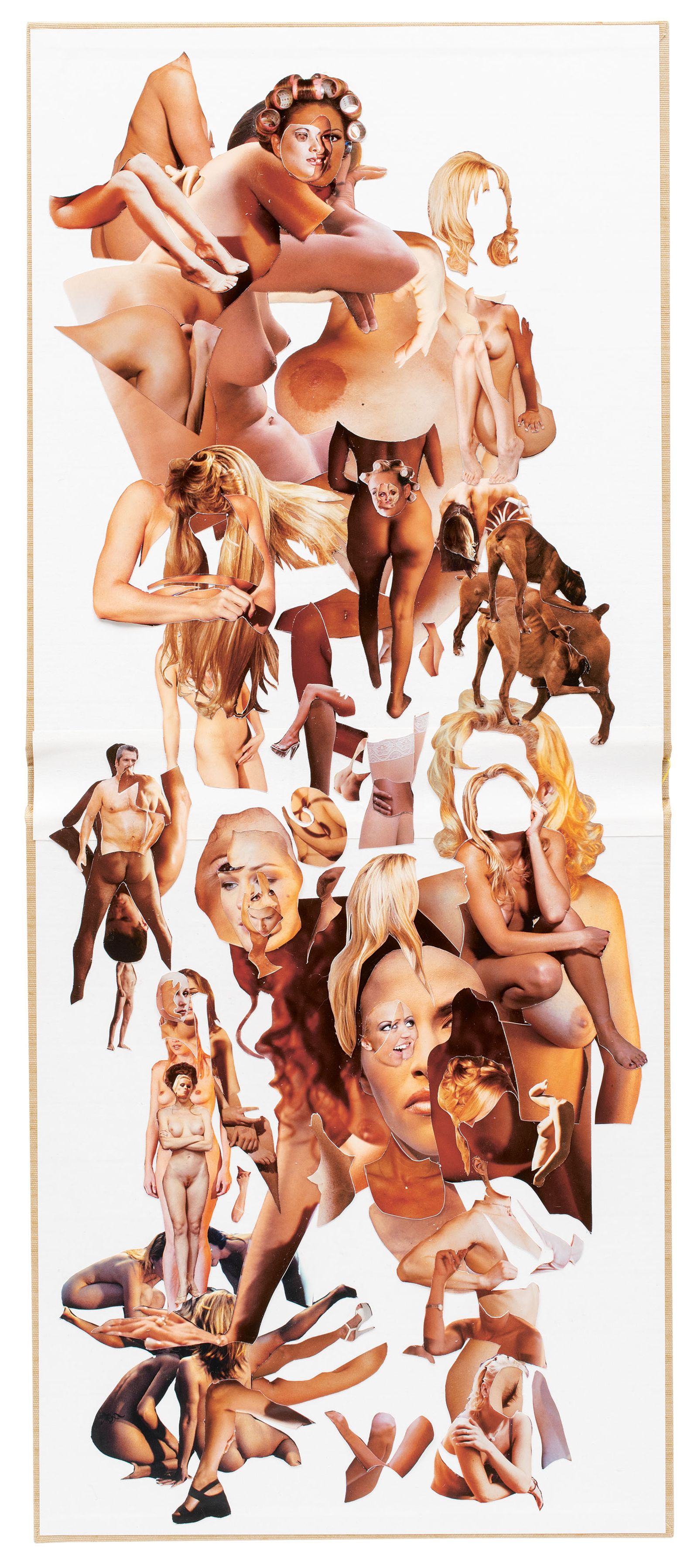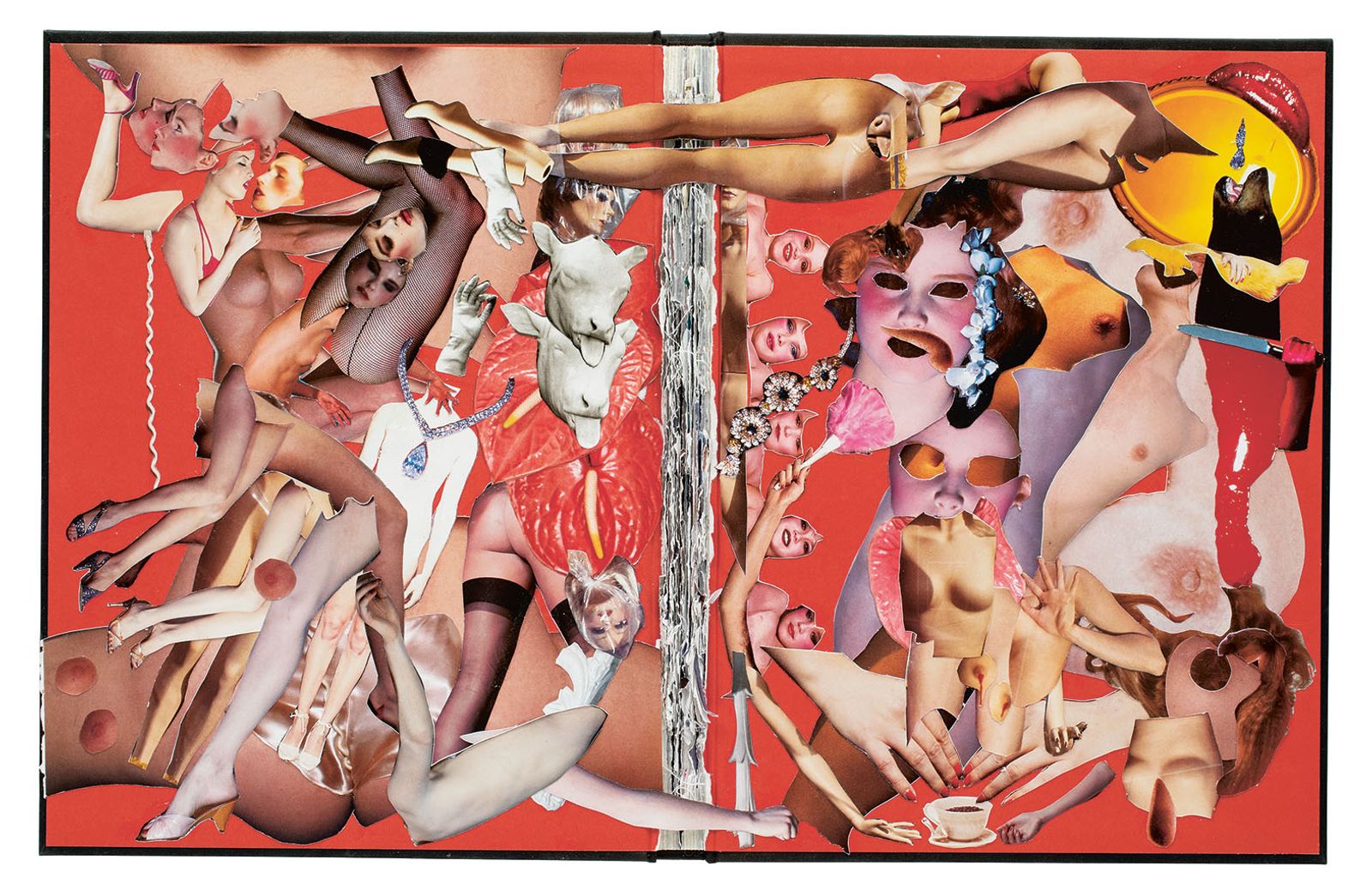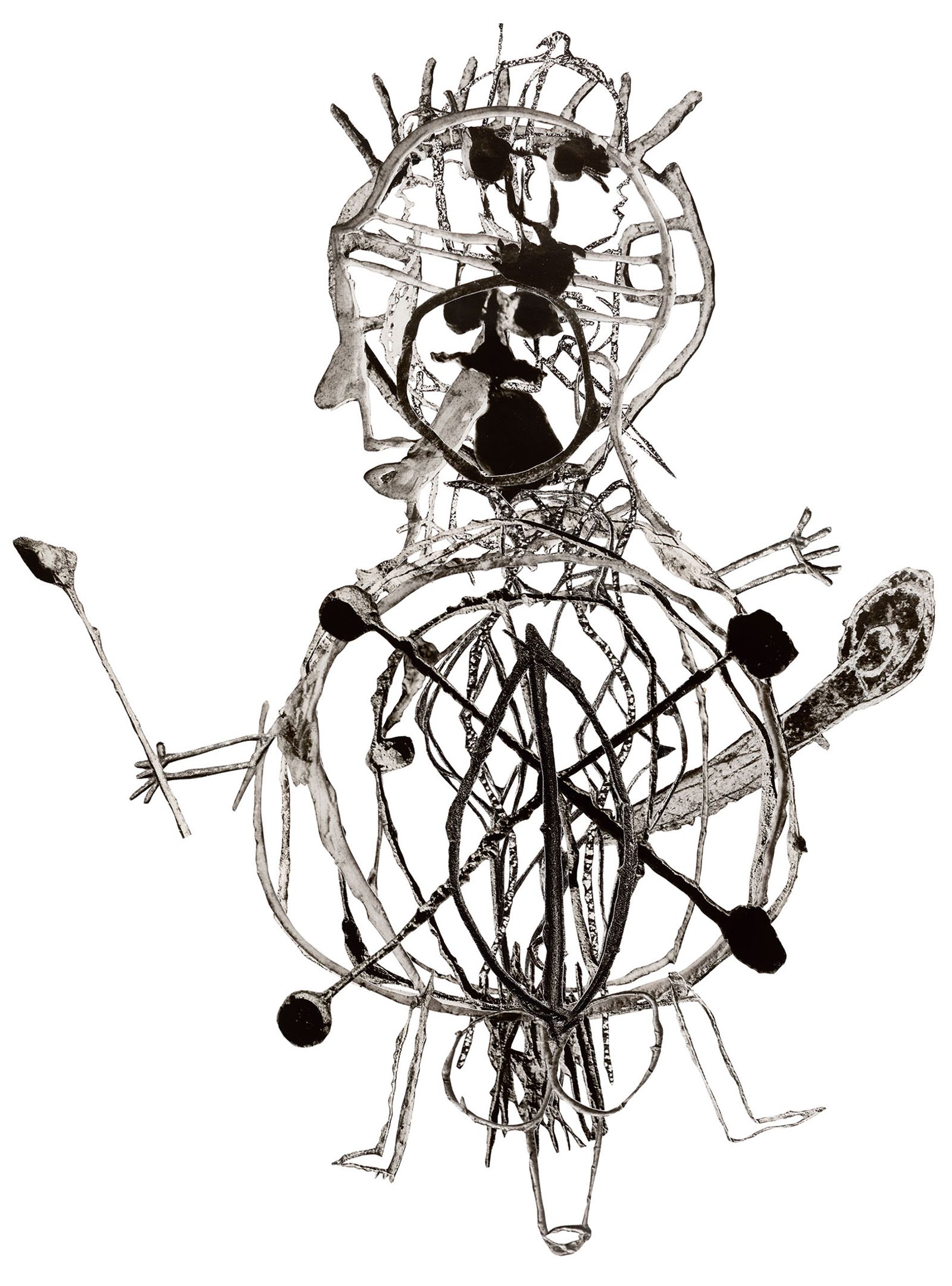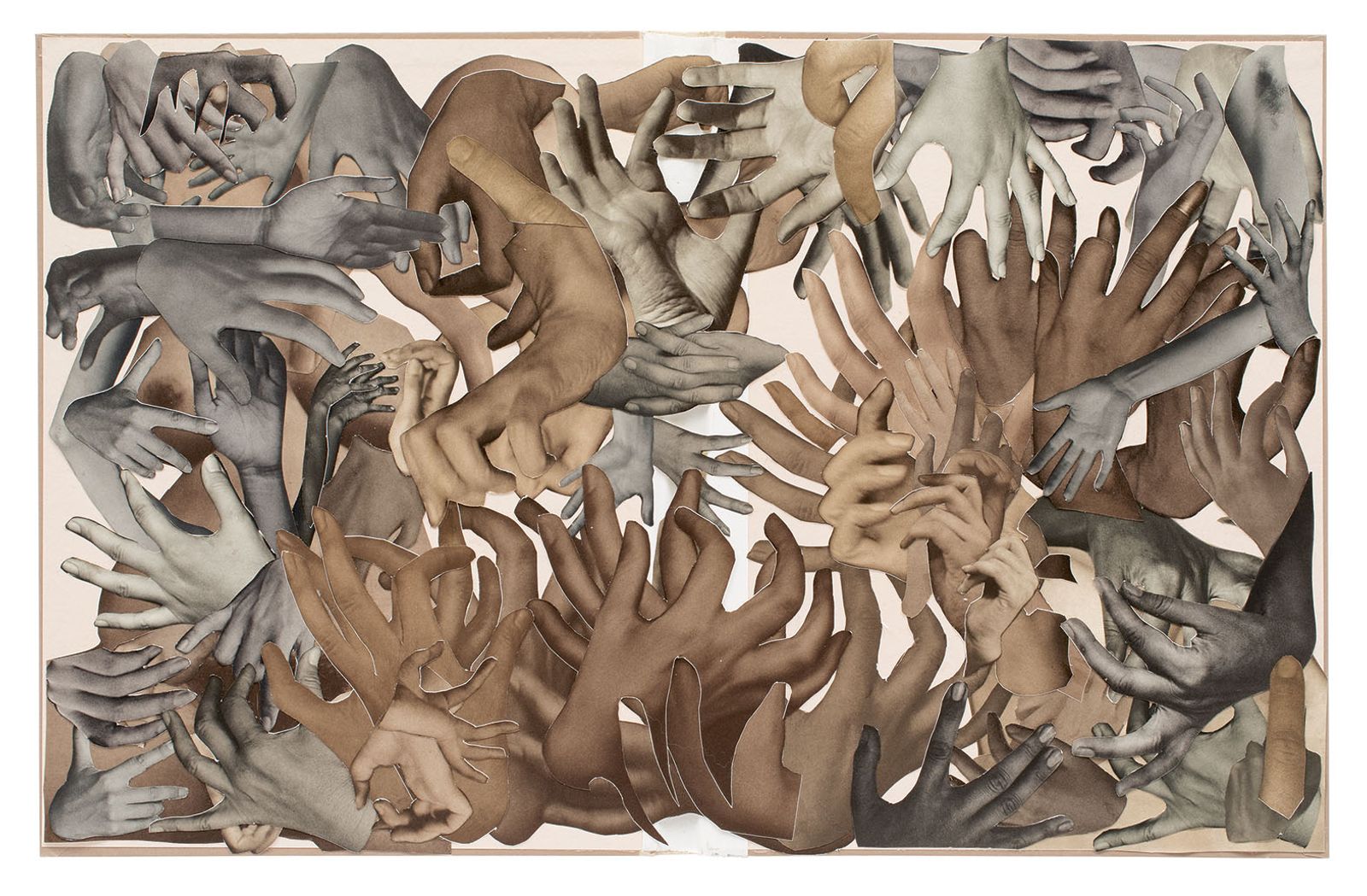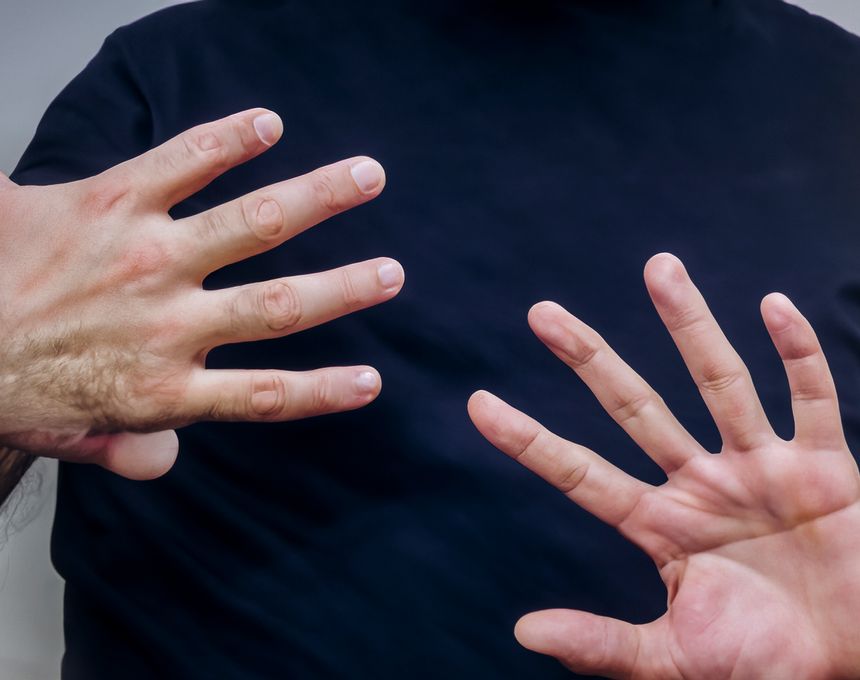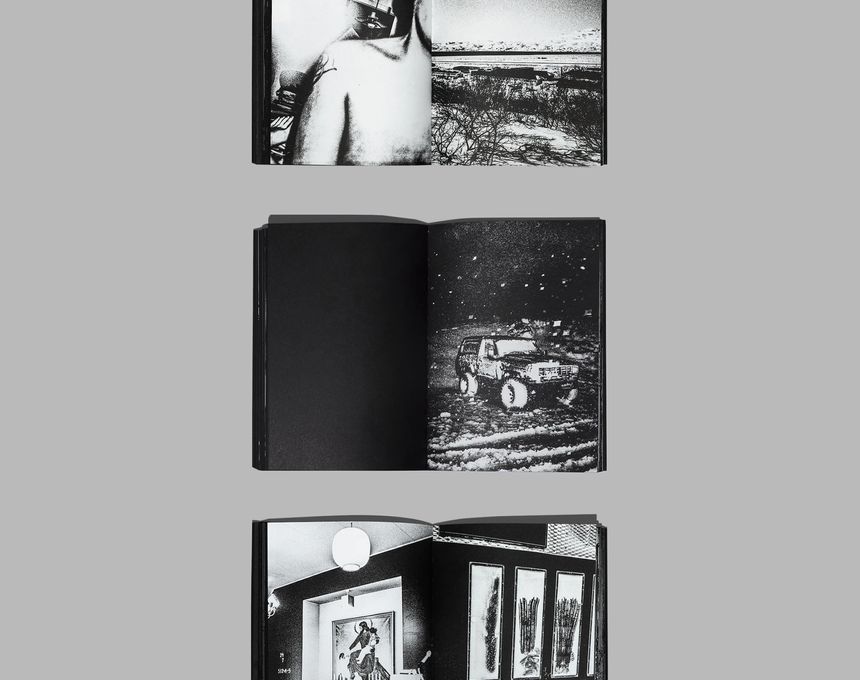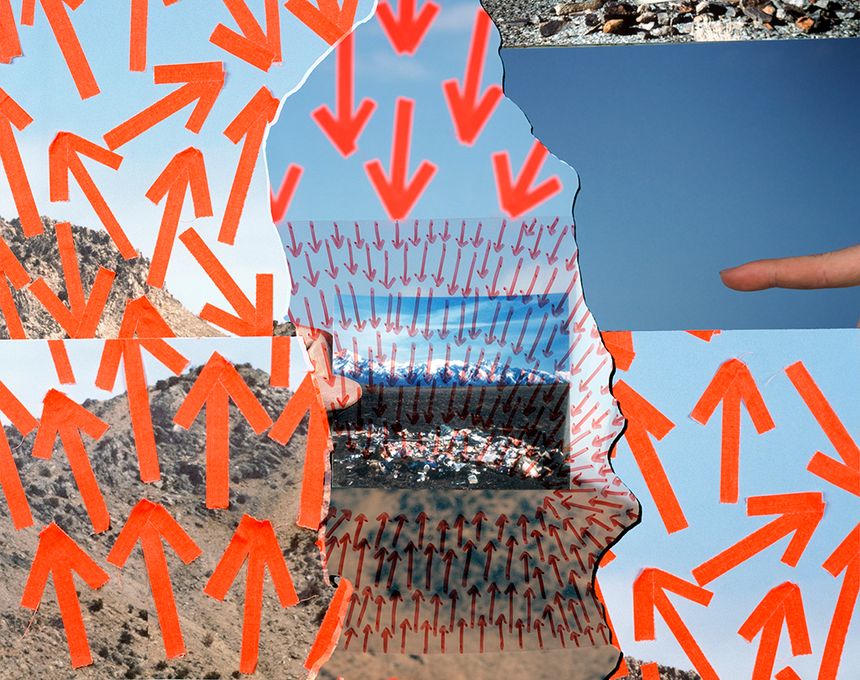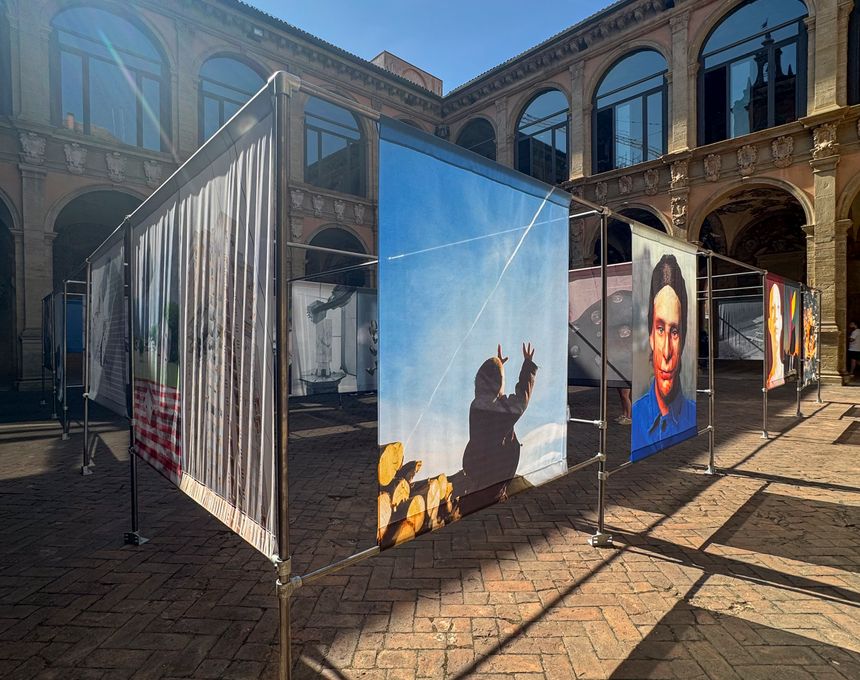Justine Kurland And The Art of Cutting Up Men's Books
-
Published30 Jun 2022
-
Author
The cover of SCUMB Manifesto states its case from the cover. "I, Justine Kurland," it reads "…thrive in the stagnant waste of your self-congratulatory boring photography… Your time is over officer historian. I call for the end of the graphic representation of the male canon, its daddy worship and its monopoly on meaning and value. The canon is every dick shoved against some woman’s back on a crowded bus. I see you there in your fat tenure chair, ogling freshmen girls with a rapey smile. I’m coming for you with a blade."
And so she does, setting about some of the classics of male photobook history with an exacto knife in one hand and a pot of glue in another. Open the book and you’ll see Think of England, the Martin Parr book of the same name sliced and diced into a nightmare dish of broad beans and fingers mixed with a Kodak Ultra dressing.
Soth’s Mississippi is transformed into a stage set of cut-out riverbank foliage, while White Churches of the Plains is turned into a series of cut-out rooftops and spires.
To an extent, SCUMB Manifesto is a stripping down of the vanities and tropes of classic male photobooks. The formal qualities of particular images are stripped bare. There is a focus on women’s bodies, with legs, breasts, butts, and vulvas cut up to form new beings.
In part, this is a re-contextualisation of work. Hannah Hoch gets a mention in one of the accompanying texts, and you can see the influence here from works like Hoch’s From an Ethnographic Museum series, works in which the entire history of the representation of women and women’s bodies is cut up to form new, dynamic beings. The misogyny of the past is embodied in the representation of the present but somehow Hoch manages to escape this and create new beings.
In the same way, Kurland’s collages have a playfulness, a scornfulness, and anger about them. It’s kind of fun to try to identify the collages, the tropes, the conceits, and the repetitions that appear. There’s a title kind at the back with page numbers to guide you but the 274 pages of the book have no page numbers, so you have to work for your answers.
The accompanying text by Justine Kurland brings out the motivations for SCUMB Manifesto. She writes about Edie Sedgewick, her addiction, her role within Andy Warhol’s Factory and her ultimate disposability within that toxic environment. The electroshock therapy Sedgewick was given is linked to medical control of women and difference, but also linked to the Warhol’s screenprints of electric chairs, in particular Warhol’s electric chair screenprints, starting with the one Ruth Snyder Brown was killed on for murdering her husband in 1927.
This connects us to Valerie Solanas. Both Sedgewick and Solanas spent time in Matteawan State Hospital, ‘an institution with such an atrocious record of human rights violations, where experimental surgeries, straitjackets, and shock therapy were routine procedures, that it was forced to close in 1977.
Solanas was imprisoned in 1968 for shooting Andy Warhol. The idea here is that women are not just victims, that what goes around can come around. It came around with Valerie Solanas. Kurland writes how in SCUM Manifesto Solanas railed against the dependence of women on men, who ‘called for an end to men, and the power that seeks domination, exploitation and death, and the creation of an all-female society. I have tried to visualize this society in my photographs.’
---------------
All photos © Justine Kurland
---------------
SCUMB Manifesto
March 2022
Published by MACK
Swiss bound paperback with silkscreen printed gauze on spine
18 gatefolds, with 2 paper stocks
48 x 60cm poster inserted into back cover
24.5 x 32cm, 282 pages, 116 plates
---------------
Justine Kurland is known for her utopian photographs of American landscapes and the fringe communities, both real and imagined, that inhabit them. Her early work comprises photographs, taken during many cross-country road trips, which reveal the double-edged nature of the American dream.
Colin Pantall is a photographer, writer and lecturer based in Bath, England. His book, All Quiet on the Home Front, focuses on family, fatherhood and the landscape. . Follow him on Instagram.
